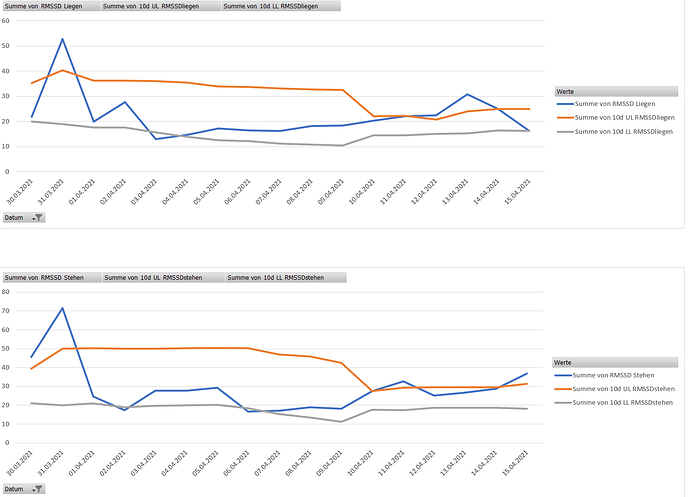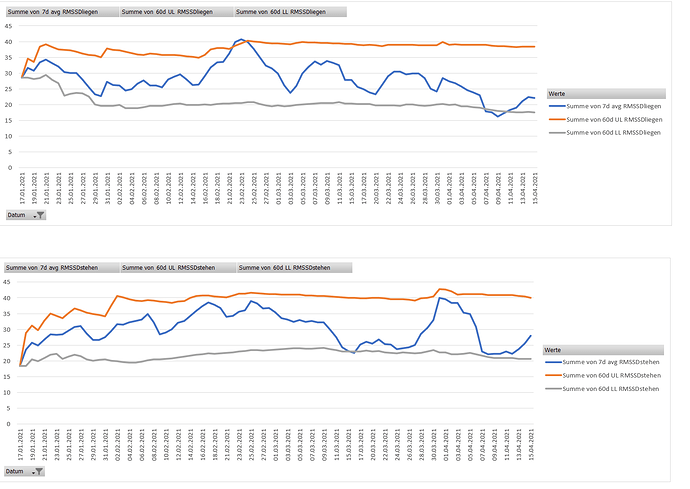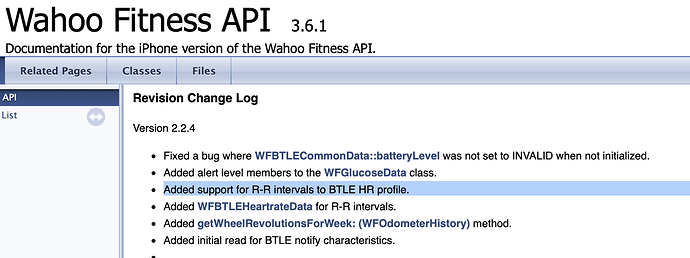It’s a Wellness Data entry. Just click on a day in the calendar and choose Wellness data. RMSSD entered here is supposed to be the morning reading.
The dfa-alpha1 thing in this thread is something totally different because that is an advanced analysis of RMSSD during exercise. The goal of that is to determine your VT1 point.
If you are about to buy a new HRM, Polar H10 is the way to go. It is recommended by most HRV app developpers.
For morning measurements my Garmin Dual does a perfect job. I’m affraid though that it isn’t doing to good with dfa-a1 measurement
Among others I have a 4iiii listed by Elite so will give it a try.
Tks.
So far I tried with 4iii and Stages straps with various results.
The Polar seems to have 4 separate contact patches, with makes for less artifacts
OMG this is so incredibly useful.
To date I have not been able to see any RR data in any of my files.
Any idea which configuration would work? Sounds like Garmin is the only one that does it…
I got it working with a Polar H10 strap and Garmin Edge 130+. If you open the fit file in https://www.fitfileviewer.com you will see a big “hrv” block with all the measurements. This is what Intervals.icu pulls in and converts to ms.
Thanks for sharing this - great interpretation and summary and really helps whilst looking at my graphs!
Thanks for your effort and this useful description!
I have now implemented a 7day rolling average in a 60day baseline for weekly analysis and a daily value in a 10day rolling average (like in this paper HRV Paper).
Daily analysis:
Weekly analysis:
Interesting to see is, due using the orthostatic test (lying and standing), that sometimes the HRV in lying is not bad but the adaptability of the body (like @Coach_Ron explained) shows something else by looking at HRV standing.
BR
Stefan
This is what the raw data looks like when reading a FIT file using the fit to csv converter that comes as part of the FIT SDK. Each line will accomodate up to 5 RR readings separated by a | (the 65535 values are nulls in my case). I’ve done a bit of experimenting/analysis of this and the timestamp for each reading set is the timestamp value from the preceding row. So you can use this to align with other timestamped values (power, HR etc). As long as you retain this timestamp then when you remove artifacts (large changes in RR) things still align. If you ignore the timestamp, just line up the RR values and remove artifacts then when you cumulate the RRs to get elapse time it may become disjointed from the original timestamp and other metrics. Of course this depends on how many artifacts are removed. In the case of my old garmin HR strap, quite a lot sometimes!!
Hi,
Please, how do you get to this SD number (Light Blue band)?
Thank you,
I see. I wish there was something similar for Wahoo or Karoo2.
Found this on the Wahoo API documentation for the iPhone app, will check if that does it
Don’t know if I understand your question correctly but SD is the standard deviation off the same series of RMSSD values.
So you take the 60-day rolling average and calculate the Std Dev for that same series of 60 values. Add and substract 0.75 times the value of the Std Dev to/from the rolling avg and you have the boundaries for the Normal value.
In Excell, I used Fault Bars to display the light blue band and STDEV.P to calculate the std dev.
If this is not what you were asking, please clarifie.
You did understood, thank you.
what is your opinion about the Whoop accessory?
What is good and what is less good
Dcrainmaker is my go to site for sports tech review. Worth giving this is a read about whoop
I’ve read this review, but sometimes this type of review is very complex and tries to address many factors, which sometimes for a normal user doesn’t make sense and the final verdict
My understanding from that review is that whoop has some very clever algorithms and a good user interface. But unfortunately all whoop metrics are based on the HR reading, and whoop HR data is very bad!
Thanks for this! I looked in FitFileViewer and it shows the hrv data all together. I didn’t know it was interleaved with the records.
Yeah HRV comes through as a different message so I can see how it would appear in FitFileViewer as a single stream. I’ve done a few tests and if you cumulate the RRs elapsed time aligns with elapsed time based on the timestamp. Knowing how the raw file looks is useful though as you can immediately see the order in which data is written. One of the reasons I wrote my own parser in R 
Hi guys, (@david specially),
Should the Resting Heart Rate entered “every day” at welness data as a result of HRMV measure (in my case done by EliteHRV) change the Resting Heart Rate in my settings?
If so I’ll no long log that info daily.
Please advise.
Thank you,



